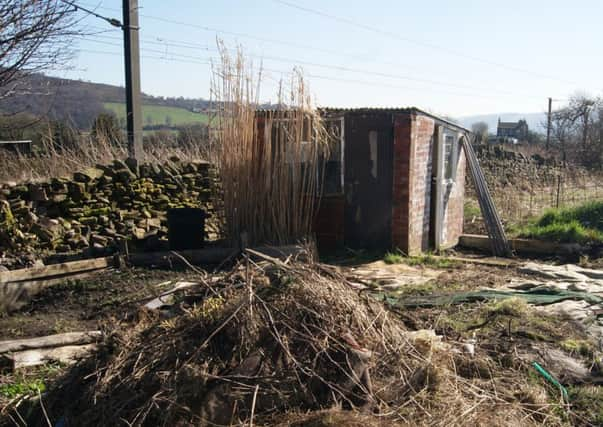Chaos reigns at the end of the row


Because my own allotment is at the end of the line, I have to walk past everyone else’s before I get to it, providing me with an excellent opportunity to cast an eye over the competition.
I have, of course, absolutely no expertise on which to base my judgements, which enables me to make them with great certainty. I find a degree of knowledge has the unfortunate impact of lessening the satisfying clarity of a hastily formed opinion.
Advertisement
Hide AdAdvertisement
Hide AdThe first thing I can report is that the typical human being has very good intentions but they don’t last long. An awful lot of allotments seem to consist of little more than a scraggy patch of grass and weeds with the odd gooseberry bush or ageing apple tree refusing to give up the struggle.
Typically there’ll be a very small patch of dug over ground somewhere among the overgrown mess, reflecting that the owner hasn’t entirely given up. Every now and then the enthusiasm to try a bit of digging takes over before it’s quickly discovered that it’s all actually quite hard work and it might be better to do it next week. Or the week after.
I recognise this personality as I constantly worry that I’m on the brink of it. The impact of this guilt is to drive me into a furious bout of ill-planned and rapid actions to prove that I’m not really lazy and am actually achieving something. This shows on my allotment.
I thought I was creating several neat rectangles in which I placed different crops in carefully planned sequences of development on the principle of ordered crop rotation. What I’ve really created is a mess of different shapes in which huge surpluses of leeks and rhubarb contrast proudly with ragged slug-ridden, overgrown cabbages.
Advertisement
Hide AdAdvertisement
Hide AdSomewhere in there I seem to have placed canes at random in the hope that they’d support peas and beans in neat rows rather than collapse at peculiar angles under the weight of vegetation which caught the frost before it produced much worth eating.
The ineffectiveness of my approach is brought home every time I pass the star allotment at the centre of the row. Here everything is neat. The sound of a mower being worked across manicured pathways greets me as I try to sidle past beds of immaculate produce without looking too jealous.
With me, onions are eccentric things which have ended up small and stunted and have organised themselves into something that was meant to be a row but never quite achieved any degree of straightness. Here they are lined up and spaced at intervals, bent over to dry in exactly the same direction at the right time of year.
The canes on my rivals’ bean patch are a work of art. The glorious red flowers earlier in the year contrasted with the pretty nasturtiums in the surrounding beds and there always seemed to be a sequence of new colours and shapes each week as the season progressed.
Advertisement
Hide AdAdvertisement
Hide AdI also saw some nice and very varied produce being taken away from the plot in such quantities that a wheelbarrow was required to carry it away.
These were probably the kind of people who spent their days ensuring that their shoes were exactly in line with each other on their shoe rack and that the cushions were arranged to geometrical perfection in their home.
But it quickly emerged that they were very nice people who just happened to be rather good at keeping allotments.
I walked past nursing my sense of inadequacy and had another go at furiously attacking another section of my disorder.
As I battled with the chaos, I began to wonder, just why had the allotment committee allocated me the one right at the very end of the row furthest away from anyone’s vision?